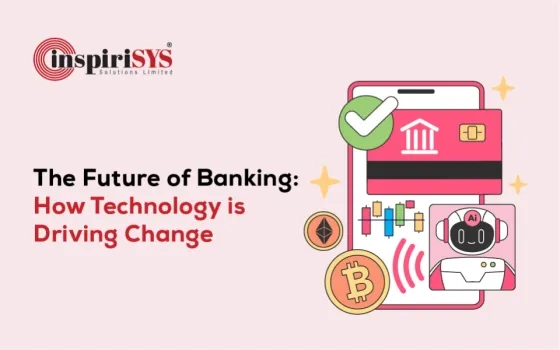How can banks stay ahead in an industry that’s constantly evolving? To maintain a competitive edge, banks must continuously refine their business strategies, with modern technology at the core to drive innovation and growth. They must transform to remain at the forefront of digital innovation by redefining financial services. The evolution lies not just in adopting the latest technologies but also in understanding how these innovations can be used to streamline and optimize every aspect of banking operations. The integration of artificial intelligence, automation and big data analytics has become essential for survival in today’s competitive financial landscape.
Before diving into how technology can reshape the banking sector, consider these key questions:
-
How can banks stay competitive in an era of constant change?
-
What steps can they take to keep up with technological advancements?
-
How can technology be employed to create a more customer-centric banking system?
Addressing these questions is vital for banks looking to implement technology effectively, ensuring they secure a leading position in the rapidly evolving financial ecosystem.
Role of Technology in Transforming Banking
As the financial services landscape undergoes rapid transformation, technology has emerged as a primary driver of change in the banking sector. With technology, banks can not only achieve operational efficiency but also gain a competitive edge and succeed in the modern ecosystem.
-
Digital Transformation
The banking industry has undergone significant changes in recent years, with technology playing an important role in creating a more digital, customer-centric and efficient environment. Digital banking has transformed how customers interact with their financial institutions, providing 24/7 access to services. This has ultimately led to gains in efficiency, speed, agility and productivity for banks.
With digital banking, customers can now manage their finances, check account balances, transfer funds and pay bills anytime, anywhere. As the need for physical branches decreases, banks are now able to reduce costs and focus on investing in innovative solutions.
-
Fintech Disruption
The emergence of Financial Technology (FinTech) companies has leveraged the limitations of traditional banking to develop cutting-edge solutions that enhance efficiency, reduce costs, and improve user experience. This shift is transforming the landscape of financial services. FinTech firms deploy novel solutions, such as blockchain-based payment systems, peer-to-peer lending platforms, and advanced algorithms, enabling them to reach new customer demographics and drive substantial business growth.
-
Artificial Intelligence and Machine Learning
The fusion of AI and ML in the banking industry has given rise to a new generation of chatbots capable of providing customers with instant, personalized support and transactional capabilities 24/7, thereby ensuring that customers receive timely assistance. Meanwhile, machine learning algorithms deliver tailored financial advice and product recommendations, helping customers optimize their financial performance and enhance overall financial well-being.
-
Streamlined Operations
The integration of automation and digitalization is taking a shift in the banking industry, by reducing operating costs and improving customer satisfaction. By deploying Robotic Process Automation (RPA) to automate routine tasks, banks can focus on allowing their employees to concentrate on more creative and strategic work, ultimately leading to improved business growth.
-
Enhanced Security Measures
In today’s evolving cyber threat landscape, technology plays a crucial role in enhancing cybersecurity for banks. By implementing biometrics and multi-factor authentication, banks establish a robust security framework that adds an extra layer of protection for customer data. Additionally, AI-powered fraud detection systems enable real-time monitoring of transactions, allowing banks to detect and respond to suspicious activity before it escalates. This technological approach helps protect customer data from unauthorized access and preserves the trust essential for the banking business.
Advantages of Adopting Technology
As computer-based technology continues to advance at an unprecedented rate, banks must remain competitive to adapt, evolve and thrive. Let’s explore the benefits of adopting technology in banks in detail:
1. Improved Customer Experience
The traditional banking model didn’t accommodate 24/7 accessibility, often leaving customers to visit multiple branches, resulting in inconvenience and frustration. However, with the adoption of digital technologies, major banks can now offer customers a digital experience, including instant AI-driven Chabot assistance, virtual assistance and efficient identity experience. The integration of machine learning and natural language processing enables personalized experience, streamlined form submissions and access to historical data.
Additionally, through reminders, targeted recommendations and timely alerts, they can provide customers with a secure management experience, helping them stay ahead of deadlines and protect their account from fraud.
2. Boosted Operational Efficiency
Digitalization enables banks to streamline their operations, migrate tasks online and improve business development, all while enabling customers to benefit from a faster and more secure experience. By offering 24/7 self-service channels, banks can shift the focus of their support teams to more strategic tasks and provide advanced digital support including onboarding tools, task lists and resource centres, allowing customers to resolve simpler issues on their own.
3. Expanded Market Reach
By adopting a digital-first experience, banks can unlock the flexibility to innovate and develop new services that enhance the existing offerings. Analysing customer data allows banks to identify preferences and behaviours and craft targeted marketing campaigns that resound with each group, ultimately driving product success in the market.
Additionally, digitalization enables banks to collaborate with new players, driving innovation through partnerships, both within and outside the financial ecosystem.
Digital Adoption Success in the Banking Industry
Banks worldwide are transforming their services by implementing digital adoption strategies, ranging from customer-centric applications to digital empowerment initiatives, to deliver a more seamless experience for their customers.
1. HSBC
In 2021, HSBC introduced its Fraud and Cyber Awareness app, using digitization to enhance banking cybersecurity education for customers. The app provides users with personalized alerts about potential scams, encouraging safer online transaction practices. With a centralized hub for cybersecurity resources, interactive quizzes and fraud reporting tools, it empowers both individuals and businesses to stay informed and vigilant.
By integrating the app into its banking ecosystem, HSBC delivers recommendations on safeguarding finances. This proactive approach has significantly reduced fraud, protecting customers from cybercrime.
2. ICICI Bank
ICICI Bank, one of the leading private banks in India, is renowned for its award-winning digital banking innovations. A key part of its success is the Corporate Internet Banking (CIB) platform, which offers corporate customers greater control over their digital transactions. To ensure customers fully utilize this platform, ICICI Bank integrated Whatfix’s digital adoption platform, providing 24/7 in-app guidance and support.
This solution significantly boosted customer engagement and reduced support queries by 50%. By adopting this digital approach, ICICI bank enhanced customer experiences, expanded communication channels and exceeded traditional banking expectations.
Conclusion
To stay competitive, banks must transform their business models to drive innovation, improve operational efficiency and meet evolving customer needs. By adopting a structured approach, setting clear goals, and learning from successful implementations and analysing successful implementations banks can overcome challenges such as security risks and legacy systems, positioning themselves to thrive in the digital age.















